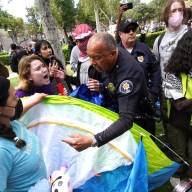As a child growing up in Mexico, Alfonso Rivera used to look out his window waiting for the rain to start. He loved seeing how the rainy season would transform cracked, dry dirt into to moist mud. “I would smell the soil and put it on my tongue.”
He forgot about the mingling of water and earth when he did an undergraduate degree in civil engineering. But soon he became interested in hydraulics and underground water and ended up doing his PhD in Paris in hydrogeology — the study of groundwater and how it moves through underground rock.
This relatively new science — it’s less than a hundred years old — was in demand in Europe after Rivera finished his studies. Companies were looking for underground places to safely store wastewater from nuclear power plants, so he kept busy for nearly 15 years studying rock formations and aquifers in Germany, Switzerland and France.
Then, in 1999, he heard about a job in Canada. The Geological Survey of Canada, which is part of Natural Resources Canada, wanted to do a groundwater inventory of the whole country. This was a unique opportunity; most of the groundwater across Europe and the U.S. is already mapped.
“It makes me feel like those adventurers who went west in the 18th and 19th centuries,” says Rivera, who got the job, became fluent in English — his fourth language — and fell in love with Canada and Quebec City, where he lives.
To map out an aquifer, hydrogeolgists go to an area where groundwater is suspected — Rivera can tell from looking at a landscape merely from the window of a helicopter what might lie beneath — and drill small wells called piezometers from which they collect water to test it and measure its pressure.
Using numerous piezometers over a few months, Rivera can construct a mathematical model that helps him map out where water lies underground.
In his current job, however, he spends most of his time in the office. He deals with data and mathematical models and spends a few hours each days communicating with his staff across the country. He’s also the scientific editor of two academic journals, so he reads, writes and edits each day.
As well, as a professor at Laval University, he devotes about one day a week to working with his masters and PhD students.
This new field is a busy one, with not enough hydrogeologists for the work available.
“As soon as we have a student finish a masters degree, they’re already gone before they’re done their thesis.”
















